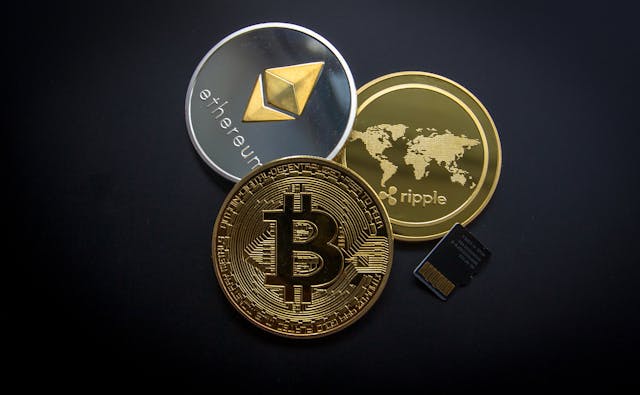In today’s global economy, cross-border transactions are essential for businesses, individuals, and economies to connect and thrive. However, traditional international payments often come with significant fees and delays, hindering growth and access to financial services. Virtual currency offers a promising solution to these challenges, enabling faster, more affordable, and secure cross-border transactions. This article explores how virtual currency is transforming global finance by reducing transaction fees and simplifying cross-border payments.

Post Contents
The Problem with Traditional Cross-Border Transactions
High Costs and Hidden Fees
Sending money across borders through traditional financial systems can be costly. Banks, payment processors, and remittance services frequently charge substantial fees, sometimes reaching 5-10% of the total transaction amount. These charges can include transfer fees, currency conversion fees, and intermediary fees when the payment passes through multiple banks. For individuals and businesses alike, these costs add up, limiting how much value is received on the other end. You can also explore Bitcoin Lexipro for further information.
Delays and Complexity
Beyond high fees, traditional cross-border transactions are often slow and complicated. Many transfers can take several days to complete due to the need for processing across multiple banking systems and time zones. This delay can be inconvenient for individuals and cause cash flow issues for businesses. The multi-step process often requires thorough documentation and compliance checks, further slowing down transactions and adding administrative hurdles.
How Virtual Currency Reduces Transaction Fees
Direct Peer-to-Peer Transactions
One of the primary ways virtual currency reduces transaction fees is by enabling direct peer-to-peer transactions. Traditional financial systems rely on intermediaries, each taking a fee for their service, which increases overall costs. Virtual currency transactions, on the other hand, typically occur directly between sender and receiver, eliminating the need for intermediaries and, consequently, reducing fees.
By cutting out middlemen, virtual currencies make it easier and more affordable to transfer funds across borders. This streamlined process is not only cost-effective but also enables instant transactions, providing a significant advantage over traditional banking systems.
Borderless Currency Conversion
Another significant cost in traditional cross-border payments is currency conversion. When transferring funds internationally, users often face exchange rate markups applied by banks and currency exchange providers. Virtual currency bypasses these conversion costs by functioning as a borderless digital asset. This means that, regardless of the country or region, users can send and receive funds in the same virtual currency without incurring additional conversion fees.
For example, if a company in the United States pays a supplier in Europe with virtual currency, both parties can transact in the same unit, avoiding exchange rate losses and minimizing transaction fees.
Enhanced Efficiency with Blockchain Technology
Transparent and Secure Transactions
Virtual currency transactions often operate on decentralized networks, such as blockchain, which provide transparency and security. Each transaction is recorded on a distributed ledger, creating a tamper-proof record that is visible to all participants. This transparency reduces the risk of fraud and provides an additional layer of security, which traditional banks charge extra to maintain.
Moreover, because virtual currency transactions on the blockchain do not require verification by multiple banks, they can be completed quickly and at a fraction of the usual cost. This secure, efficient process is particularly beneficial for individuals and businesses looking to save money on cross-border transactions.
Reduced Dependency on Intermediaries
With blockchain, there is less reliance on intermediaries, which not only reduces fees but also speeds up the entire transaction process. By eliminating the need for multiple financial institutions to approve each transfer, blockchain allows for faster, more cost-effective payments. This reduction in dependency on intermediaries can be especially beneficial for small businesses that often face higher fees and longer wait times in traditional banking systems.
How Virtual Currency Enhances Financial Inclusion
Providing Access to Underserved Regions
One of the major benefits of virtual currency in cross-border payments is its potential to increase financial inclusion. Traditional banking services are often unavailable in rural or underserved areas, where infrastructure and regulatory challenges limit access. Virtual currency can reach these communities through mobile technology, providing access to digital financial services and enabling cross-border transactions without the need for a bank account.
By lowering fees and simplifying transactions, virtual currency can empower individuals and small businesses in developing regions to participate more fully in the global economy, enhancing their economic stability and growth prospects.
Facilitating Remittances for Migrant Workers
For migrant workers who send remittances to their families, high fees and delays can take a toll on their finances. Virtual currency offers a solution that enables them to send funds at a lower cost and with faster processing times, ensuring their families receive more of the funds intended for them. This efficiency is vital for millions of families worldwide who rely on remittances for daily living expenses, education, and healthcare.
Conclusion
Virtual currency is revolutionizing cross-border transactions by minimizing fees, eliminating intermediaries, and facilitating faster, more inclusive payments. As a digital, decentralized solution, it offers a powerful alternative to the high costs and complexities associated with traditional banking systems. Through lower fees, reduced currency conversion costs, and enhanced access to underserved populations, virtual currency plays a key role in making cross-border transactions more accessible and affordable. As the global economy continues to evolve, virtual currency stands as a vital tool in reducing barriers to financial connectivity and creating a more efficient global financial ecosystem.